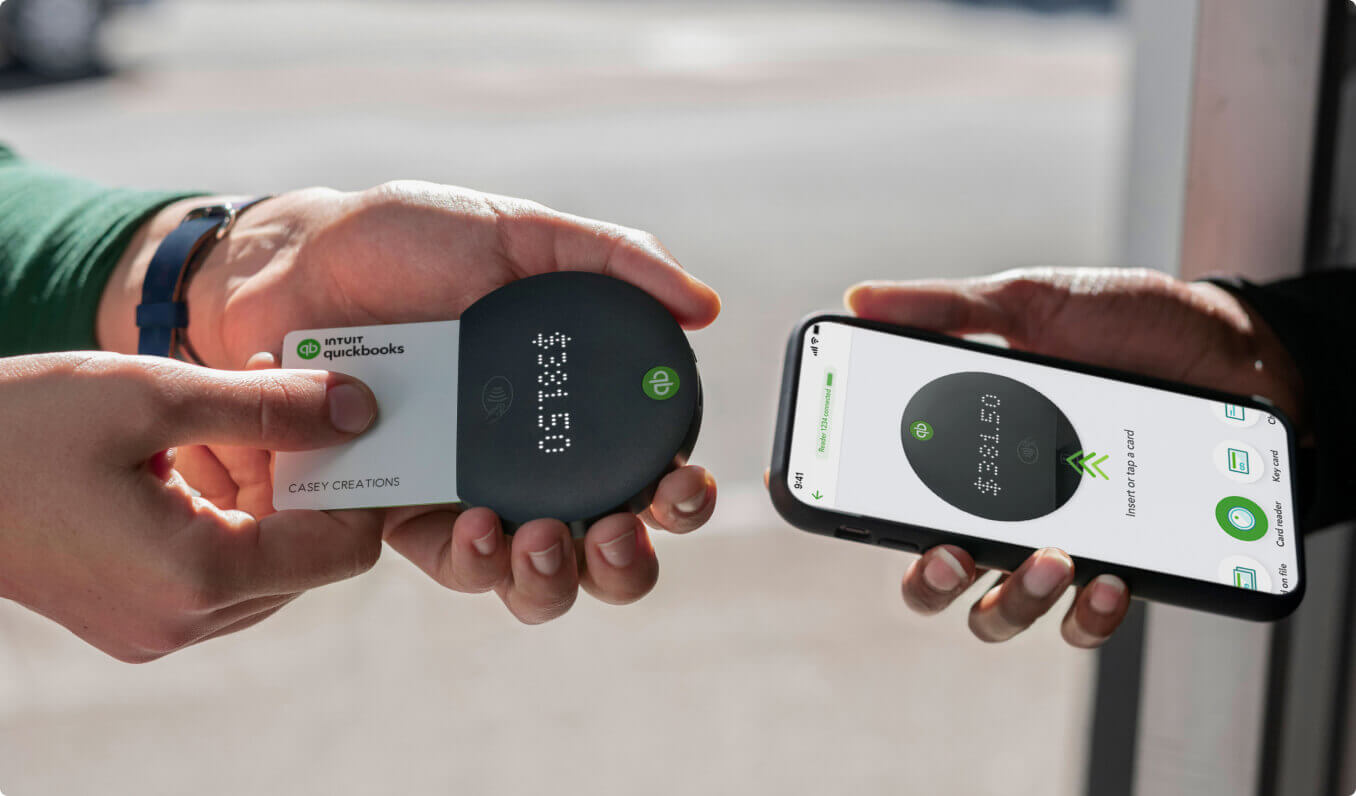Get affordable rates and fast deposit speeds. No setup costs or hidden fees—just pay as you go.
Keep more of what you make with competitive payment rates
QuickBooks
Square
Stripe
Cards & digital wallets
Invoices or quick requests paid using Visa, Mastercard, Discover, American Express, Apple Pay, PayPal, and Venmo
2.99%
3.3% + 30¢
No PayPal or Venmo
2.9% + 30¢*
No PayPal or Venmo
ACH bank payments
Invoices or quick requests paid using an electronic transfer that pulls money from a customer’s bank account into yours
1%
1%
$1 min
1.2%*
Card reader
In-person payments with a card reader. Takes Visa, Mastercard, Discover, American Express, Also takes Apple Pay, Google Pay, and Samsung Pay. Not available with QuickBooks Money
2.5%
2.6% +10¢
2.7% + 5¢
Keyed-in cards
Payments processed by manually entering a customer’s card information. Not available with QuickBooks Money
3.5%
3.5% + 15¢
3.4% + 30¢
Cards & digital wallets
Invoices or quick requests paid using Visa, Mastercard, Discover, American Express, Apple Pay, PayPal, and Venmo
QuickBooks
2.99%
Square
3.3% + 30¢
No PayPal or Venmo
Stripe
2.9% + 30¢*
No PayPal or Venmo
ACH bank payments
Invoices or quick requests paid using an electronic transfer that pulls money from a customer’s bank account into yours
QuickBooks
1%
Square
1%
$1 min
Stripe
1.2%*
Card reader
In-person payments with a card reader. Takes Visa, Mastercard, Discover, American Express, Also takes Apple Pay, Google Pay, and Samsung Pay. Not available with QuickBooks Money
QuickBooks
2.5%
Square
2.6% +10¢
Stripe
2.7% + 5¢
Keyed-in cards
Payments processed by manually entering a customer’s card information. Not available with QuickBooks Money
QuickBooks
3.5%
Square
3.5% + 15¢
Stripe
3.4% + 30¢
Rates are accurate as of 07/31/2023. All listed rates are per transaction. Not all payment plans shown; only most comparable plan by feature are highlighted. *Stripe may charge an additional 0.4%/0.5% fee per paid invoice based on plan.
Dig into the details
Check out our rates by payment type, see your deposit speed options, and get details on chargeback protection.
